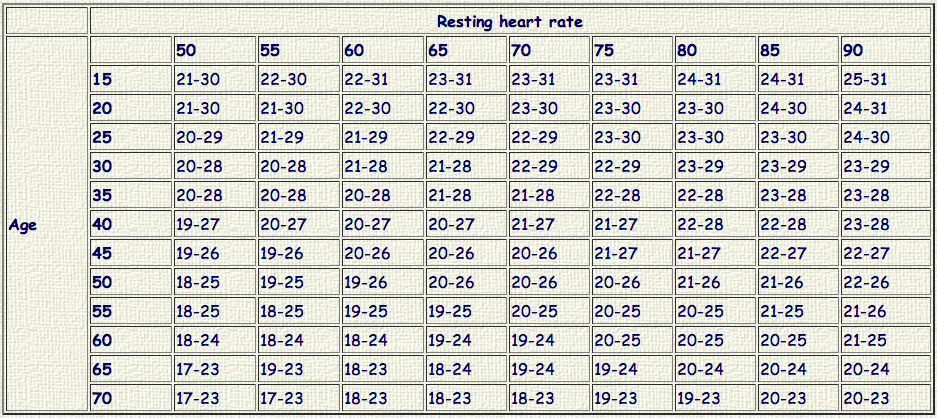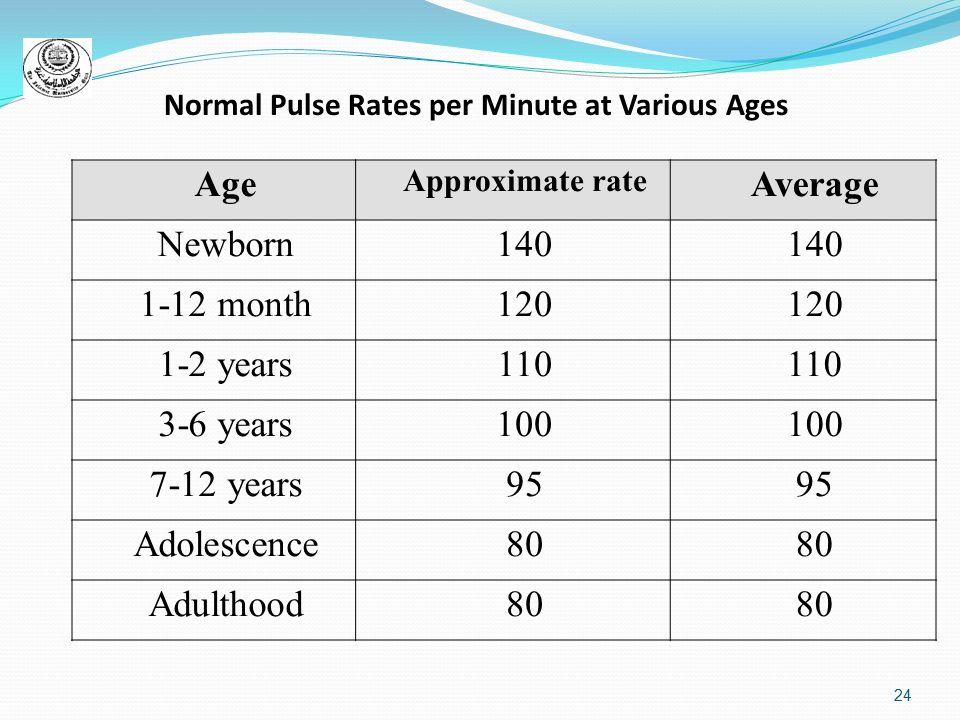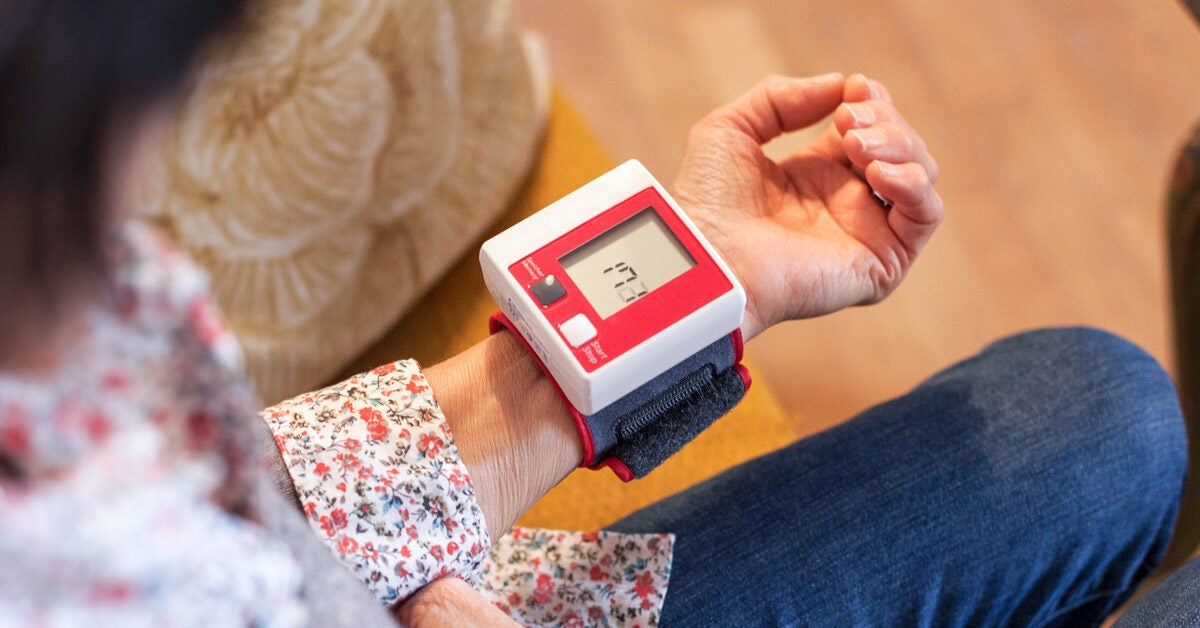- Normal Pulse Per Minute For Adults
- Normal Pulse Per Minute For Women
- Normal Pulse Rate Per Minute By Age
- Normal Pulse Per Minute For Men
Heart rate, also known as pulse, is the number of times a person’s heart beats per minute. A normal heart rate depends upon the individual, age, body size, heart disease, whether the person is sitting or moving, medication use and even air temperature level. Even feelings can have an impact on heart rate. For instance, getting excited or scared can increase the heart rate. But most significantly, getting fitter decreases the heart rate, by making heart muscles work more efficiently.
A normal adult has a pulse rate of 72 per minute and an athlete’s pulse rate maybe below 50 per minute. Patients with an average resting pulse rate above 70 beats per minute can have a slightly. The normal pulse for healthy adults ranges from 60 to 100 beats per minute. The pulse rate may fluctuate and increase with exercise, illness, injury, and emotions. Females ages 12 and older, in general, tend to have faster heart rates than do males. A child's pulse rate can be normal, fast (tachycardia), or slow (bradycardia). In some forms of tachycardia, like supraventricular tachycardia (SVT), the heart rate can rise above 220 beats per minute. In contrast, a child with bradycardia may have a heart rate of less than 50 beats per minute. Count the beats you feel for 10 seconds. Multiply this number by six to get your heart rate (pulse) per minute. Count your pulse: beats in 10 seconds x 6 = beats/minute. What is a normal pulse? Normal heart rates at rest: Children (ages 6 - 15) 70 – 100 beats per minute; Adults (age 18 and over) 60 – 100 beats per minute.
Understanding a Normal Heart Rate in Your Age
“Your heart is a muscle and similar to enhancing other muscles by doing activities, you can do the exact same thing with your heart,” said Dr. Mary Ann Bauman, an internist at Integris Baptist Medical Center in Oklahoma City.

Understanding about your heart rate can help you monitor your physical fitness level, and it might assist you spot establishing illness if you are experiencing other symptoms.
“If you are an athlete and you’re training, or if you are having symptoms such as dizziness, then understanding your heart rate is important,” Bauman said. “However as a general guideline, unless someone is having issues, it’s not extremely important to constantly understand what your heart rate is.”
How to measure heart rate
The most convenient places to measure your heart rate are on the wrists or one side of the neck. For an accurate reading, put two fingers over one of these areas and count the variety of beats in 60 seconds. You can also do this for 20 seconds and increase by 3, which might be easier, Bauman stated. Using your thumb may be confusing since sometimes you can feel a pulse in the thumb, she said.
Resting heart rate
Your resting heart rate is your pulse when you are calmly sitting or lying. It’s best to determine your resting heart rate it in the early morning prior to you rise, according to the American Heart Association (AHA). For adults 18 and older, a typical resting heart rate is in between 60 and 100 beats per minute (bpm), depending upon the individual’s physical condition and age. For children ages 6 to 15, the normal resting heart rate is in between 70 and 100 bpm, according to the AHA.
But a heart rate lower than 60 doesn’t always mean you have a medical problem. Active people often have lower heart rates since their heart muscles do not need to work as hard to maintain a constant beat. Athletes and people who are very in shape can have resting heat rate of 40 bpm.
A resting heart rate lower than 60 might also be the outcome of taking certain medications. “Many medications individuals take specifically medication for blood pressure, such as the beta blockers, will lower your heart rate,” Bauman said.
If combined with symptoms, a low heart rate might signify an issue.
“A low heart rate in somebody who is having dizziness and lightheadedness might suggest that they have an abnormality that has to be taken a look at,” Bauman said.
Maximum and target heart rate for people below 50
There is no definitive medical recommendations on when a resting heart rate is high, however a lot of medical specialists concur that a constant heart rate in the upper levels can put too much stress on the heart and other organs. If an individual has a high heart rate at rest and is experiencing other symptoms, doctors might analyze his or her heart function, Bauman said.
Knowing your heart rate during workout sessions can help understand whether you are doing too much or not enough, the AHA says. When individuals work out in their “target heart zone,” they acquire the most benefits and improve their heart’s health. When your heart rate remains in the target zone you know “you are pressing the muscle to obtain more powerful,” Bauman said.
Normal Pulse Per Minute For Adults


An individual’s target heart rate zone is between 50 and 85 percent of his or her maximum heart rate, according to the AHA.
A lot of commonly, maximum heart rate is calculate by subtracting your age from 220:
220 – Age. For a 30-year-old person, for example: 220 – 30 = 190.
The target zone for a 30-year-old individual would be between 50 and 85 percent of his/her maximum heart rate:
Normal Pulse Per Minute For Women
- 50 level: 190 x 0.50 = 95 bpm
- 85 percent level: 190 x 0.85 = 162 bpm
Maximum Heart Rate for People Older than 50
The formula for maximum heart rate works well for people under 40 but for older people it may overestimate their maximum heart rate, Bauman said. For older people, a much better formula for the optimal heart rate is:
208 – (0.75 x Age)
- You can either manually compute your heart rate during exercise or use heart rate displays that wrap around the chest, or are consisted of in sports watches.
- Nevertheless, that’s not to say that working out without getting the heart rate up to the target zone has no advantage, Bauman said.
” So many individuals just aren’t doing any workout that I worry less about them reaching their target heart rate and more about them getting out and moving their body,” Bauman said.
Reducing a fast heart rate.
Pulse rates can spike due to anxiety, stress, dehydration and overexertion. Taking a seat and taking sluggish, deep breaths can normally decrease your heart rate. Working out and getting trimmer will usually reduce heart rate, too.
Arrhythmia, tachycardia and other conditions
A variety of conditions can influence your heart rate. An arrhythmia causes the heart to beat too quickly, too sluggish or with an irregular rhythm.

Tachycardia is usually considered to be a resting heart rate of over 100 beats per minute, according to the National Institutes of Health, and typically caused when electrical signals in the heart’s upper chambers fire abnormally. If the heart rate is closer to 150 bpm or higher, it is a condition called supraventricular tachycardia (SVT). In SVT, your heart’s electrical system, which controls the heart rate, is out of whack. This normally needs medical attention.
Bradycardia is a condition where the heart rate is too low, usually less than 60 bpm. This can be the result of problems with the sinoatrial node, which acts as the pacemaker, or damage to the heart as an outcome of a heart attack or heart disease.
High blood pressure vs. high heart rate
Normal Pulse Rate Per Minute By Age
Some individuals confuse high blood pressure with a high heart rate. Blood pressure is the measurement of the force of the blood against the walls of arteries, while pulse rate is the number of times your heart beats per minute.
Normal Pulse Per Minute For Men
There is no direct connection in between the two, and high blood pressure does not always lead to a high pulse rate, and vice versa. Heart rate goes up during laborious activity, however a vigorous workout may just modestly enhance high blood pressure.
